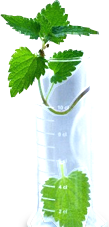



Author(s): Arice Mary M * and Karpagam Chinnammal S
The primary goal of the treatment of wound is rapid closure and a functional and aesthetically satisfactory scar. Wound healing is a dynamic, interactive process involving soluble mediators, blood cells, extracellular matrix, and parenchymal cells. An improvement in the properties of wound healing textile was achieved through impregnating with antibacterial agents. In the present study, one such method was aimed to reduce the complications of wounds by coating wound healing knitted fabric with two different groups of synergistic drugs such as (piperacillin and tazobactam), and a carrier beta cyclodextrin. The drug coated (piperacillin-tazobactam) and drug-carrier coated (piperacillin-tazobactam+ beta cyclodextrin) knitted fabrics were subjected to antibacterial activity against the wound pathogens. Among the four different concentration of synergistic drugs (piperacillin-tazobactam), 4X strength exhibited maximum inhibitory zones against all the test organisms. Maximum inhibitory zones of 21mm were observed against Escherichia coli and 19mm against Staphylococcus aureus. Antibacterial activity of drug-carrier coated (piperacillin-tazobactam+ beta cyclodextrin) knitted fabric showed maximum inhibitory zone of 31mm against Escherichia coli and Staphylococcus aureus respectively. When compared to drug coated knitted fabrics, drug-carrier coated knitted fabrics showed more antibacterial activity. This was mainly due to the inhibitory actions of the carrier; beta cyclodextrin. Thus the proposed research illustrated the significance of synergistic drug and carrier coatings on wound healing knitted fabrics. The developed product was thus aimed to prevent from complications like amputation in wound closure and a functional and aesthetically satisfactory scar.